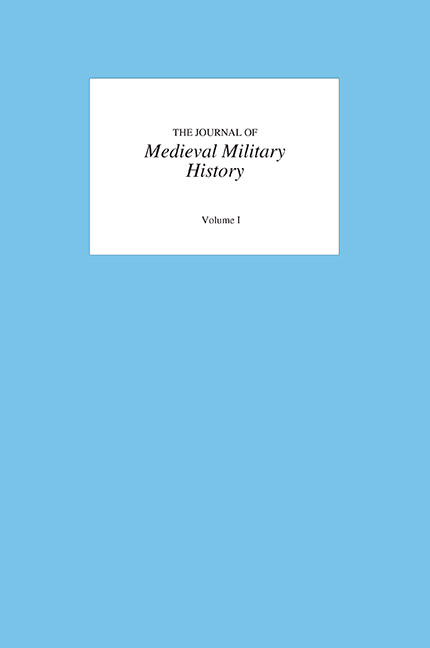Book contents
- Frontmatter
- Contents
- Editor's Introduction
- 1 The Vegetian ‘Science of Warfare’ in the Middle Ages
- 2 Battle Seeking: The Contexts and Limits of Vegetian Strategy
- 3 Italia – Bavaria – Avaria: The Grand Strategy behind Charlemagne's Renovatio Imperii in the West
- 4 The Composition and Raising of the Armies of Charlemagne
- 5 Some Observations on the Role of the Byzantine Navy in the Success of the First Crusade
- 6 Besieging Bedford: Military Logistics in 1224
- 7 ‘To aid the Custodian and Council;’ Edmund of Langley and the Defense of the Realm, June – July 1399
- 8 Flemish Urban Militias against the French Cavalry Armies in the Fourteenth and Fifteenth Centuries
4 - The Composition and Raising of the Armies of Charlemagne
Published online by Cambridge University Press: 12 September 2017
- Frontmatter
- Contents
- Editor's Introduction
- 1 The Vegetian ‘Science of Warfare’ in the Middle Ages
- 2 Battle Seeking: The Contexts and Limits of Vegetian Strategy
- 3 Italia – Bavaria – Avaria: The Grand Strategy behind Charlemagne's Renovatio Imperii in the West
- 4 The Composition and Raising of the Armies of Charlemagne
- 5 Some Observations on the Role of the Byzantine Navy in the Success of the First Crusade
- 6 Besieging Bedford: Military Logistics in 1224
- 7 ‘To aid the Custodian and Council;’ Edmund of Langley and the Defense of the Realm, June – July 1399
- 8 Flemish Urban Militias against the French Cavalry Armies in the Fourteenth and Fifteenth Centuries
Summary
Armies of Charlemagne The conquests of Charlemagne were so spectacular that inevitably historians have been deeply interested in the nature of his armies and the way in which they were recruited. In the last twenty years or so, two clearly opposed views on this subject have emerged; the strengths and weaknesses of both are examined in this article. On certain points these schools of thought agree. They reject the idea that Carolingian victories were based on the deployment of a new form of heavy cavalry using shock tactics. They both accept that the Carolingians enjoyed substantial advantages over their barbarian enemies in terms of weapons, as a result of their superior economic base. This should not, however, be exaggerated, because in 776 the Saxons employed siege machinery against Frankish fortifications. Above all they attribute Carolingian success to superior military tactics, logistical capacity and good techniques. However, their views on the raising of Carolingian armies are very different. Broadly speaking, one approach tends to see the army as an elite group, perhaps bulked out by camp-followers, while the other presents us with the view of a mass army raised from the whole body of freemen within the Frankish lands. This article proposes that the way in which Charlemagne raised his armies has to be understood in terms of his wider relationship with the political community of the Carolingian lands that were dominated by the high nobility. It suggests that there was no single Carolingian army, but rather that we should think in terms of different kinds of armies raised in particular circumstances and differing in make-up. This view is based specifically upon an examination of the sources for the reign of Charlemagne. Modern writers have perhaps been rather too anxious to read into this period the ideas and developments of later centuries.
A substantial contribution to our understanding of Carolingian warfare has been made by two very fine articles written by T. Reuter in which he argued that the armies with which the Carolingians made their remarkable conquests were not so very different from those of the Merovingians, consisting primarily of great leaders, the leudes as they had been called in the Merovingian sources, with their warbands of professional followers.
- Type
- Chapter
- Information
- Journal of Medieval Military HistoryVolume I, pp. 61 - 82Publisher: Boydell & BrewerPrint publication year: 2002

